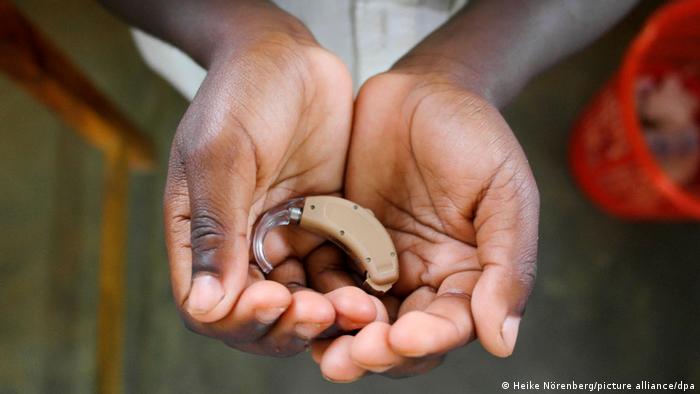IN recent years, it seems as if viruses are appearing out of thin air.
But many of these deadly illnesses have been lurking among us for centuries, deep in our forests and below the earth’s surface.
Climate change , human encroachment into jungles and forest, growth in wildlife trade and population growth are all playing a part in spreading these diseases.
Some, we’ve managed to eradicate with effective vaccines .
Many still continue to infect and kill thousands, and in some cases millions, of people every year.
Cases of the flu have surged in the last week, as the UK braces for a ‘ twindemic’ when both flu and Covid explode at once  after a big outbreak in Australia in September.
Meanwhile, Uganda has recently been hit with a dangerous strain of Ebola, for which there is currently no proven vaccine.
Here are the 12 of the most deadly viruses ever to have infected humans, and which ones are still circulating today.
1. Marburg virus
Marburg virus disease is similar to Ebola and can spread fast from person to person.
It has a fatality rate of up to 88 per cent in patients who catch it, and there is no known cure or treatment.
It first identified in 1967 in both Marburg and Frankfurt in Germany, and in Belgrade, Serbia.
The outbreak was linked to labs using African green monkeys imported from Uganda.
Illness caused by the virus usually begins quite quickly with severe symptoms such as high fever, headache , malaise, diarrhoea and nausea.
Patients are often been described as “ghost-like”;, with extreme fatigue and drawn features.
Most patients go onto develop haemorrhaging within a week, with fatal cases bleeding from multiple areas - such as the nose, gums and vagina.
Death usually happens between eight and nine days after onset - largely due to severe blood loss and shock.
A patient was confirmed to be carrying to disease in West Africa for the first time after dying on August 2, in Guinea.
2. Ebola virus
The Ebola virus disease - previously called Ebola haemorrhagic fever - is a viral infection that occurs in humans and primates.
It causes an acute, serious illness which is often fatal when left untreated.
The virus begins with symptoms including fever, intense fatigue, muscle pain and a sore throat, before progressing to vomiting and diarrhoea as well as internal and external bleeding.
On average, 50 per cent of people who contract Ebola will die.
However, cases fatality rates have varied between 25 per cent to 90 per cent in past outbreaks.
In the current outbreak, which began in 2018 in the Kivu region of the Democratic Republic of the Congo, the overall fatality rate was around 67 per cent.
Doctors in the UK have recently been told to be on high alert after an Ebola outbreak in Uganda killed 10 people.
3. Rabies
Rabies is known as a deadly virus that infects the brain.
It is typically spread through a bite or scratch from an infected animal, namely dogs, bats, coyotes, foxes, skunks and raccoons.
The infection is common worldwide but is predominantly found in Asia, Africa , and Central and South America.
After a bite or other rabies exposure, the virus can take weeks or months to start causing symptoms.
Symptoms will typically start out as flu-like and get more aggressive as time goes on.
Once symptoms of the disease begin, the virus fatal in 100 per cent of cases.
However, we do have an effective vaccine against rabies, which you should get if visiting an area of the world where rabies is common.
4. HIV/AIDS
HIV is a virus that, left untreated, can weaken the immune system and cause AIDS.
HIV itself is not deadly, but AIDS is.
Aids, which stands for acquired immune deficiency syndrome, is a number of potentially life-threatening infections and illnesses that happen when your immune system has been severely damaged by HIV.
There is currently no cure for HIV or AIDS.
But powerful antiviral drugs have made it possible for people to live for years with HIV, so that it doesn’t turn into AIDS.
An estimated 32 million people have died from AIDS since the disease was first recognized in the early 1980s.
Most people with HIV will notice a short illness, similar to flu, two to six weeks after getting the virus.
5. Smallpox
Smallpox was once a common global disease.
It caused small blood vessels of the skin, mouth and throat become infected before virus the spread across the body.
Fortunately after various vaccination campaigns during the 19th and 20th centuries, smallpox was considered to be globally eradicated in 1979 by the WHO.
But before that, humans had battled smallpox for thousands of years, and the more severe version of the disease, Variola major, killed about 30% of those it infected , according to the WHO.
It left survivors with deep, permanent scars and, often, blindness.
In the 20th century alone, smallpox killed 300 million people, according to National Geographic.
6. Hantavirus
Hantavirus pulmonary syndrome (HPS) is a very deadly disease for those who catch it, but it has killed relatively few people.
The virus is found in rodents and only passes to humans if someone ingests their bodily fluids - such as urine, faeces or saliva.
For those who are unlucky enough to catch the virus, they have a 60 per cent chance of dying.
People infected by hantavirus will show symptoms including fever, bleeding and kidney damage, according to experts from the Chinese Center for Disease Control and Prevention.
In China, vaccines for the hantavirus have been available for nearly 20 years, and taking vaccines is seen as the most effective way to prevent the infection.
7. Influenza
Influenza, or flu as it’s commonly called, affects around five to 20 per cent of the UK population each year.
During a particularly bad flu season, around 30,000 Brits will die after contracting the virus.
However, we do have vaccines to combat the disease.
Each year the flu virus changes and vaccines are adjusted to deal with this.
Overall, flu vaccines appear to be effective at preventing virus in around 40 to 60 per cent of cases.
The symptoms of flu are very similar to those of a very bad cold.
The NHS says this includes a suffer high temperature of 38C or more.
A high temperature had previously been a symptom of Covid, but the experts said that this is less likely with the Omicron strain.
You will also experience body aches and a dry cough.
You may also have difficulty sleeping , loss of appetite and feeling or being sick.
8. Dengue
Dengue fever is spread by mosquitos in the the tropical and subtropical regions of the globe.
According to WHO dengue infects 100 to 400 million people a year.
Although dengue fever has a lower mortality rate than some other viruses - at around 1 per cent- the virus can cause an Ebola-like disease called dengue hemorrhagic fever.
This version of the virus has a mortality rate of 20 per cent if left untreated.
A vaccine is available to children living in areas where dengue is common.
There is no vaccine available against dengue fever for travellers.
9. Rotavirus
Rotavirus is a diarrheal disease that kills about 200,000 children each year.
The virus spreads quickly through the fecal-oral route (when small particles of feces is eaten).
Thanks to vaccines, children in the western world are protected from the virus.
However, the disease is a killer in the developing world, where rehydration treatments are not widely available.
10. SARS
The deadly virus that causes severe acute respiratory syndrome, or SARS, was first identified in 2003 during an outbreak in China, according to the WHO.
The virus likely emerged in bats, hoped to other mammals before making the leap to humans.
The disease is known to cause flu-like symptoms like fever, chills and body aches.
Often it progresses to pneumonia, a severe condition in which the lungs become inflamed and fill with pus.
SARS kills around 9.6 percent if those it infects.
However, no new cases of SARS have been reported since the early 2000s, according to the US The Centers for Disease Control and Prevention (CDC).
11. Covid
Covid, similar to SARS is a respiratory illness which first emerged in China in 2019.
It doesn’t kill a huge proportion of those who it infects but it has caused more than 6.57 million deaths worldwide and counting .
The virus also poses a higher risk to people who have underlying health conditions such as diabetes , high blood pressure or obesity .
Common symptoms include fever, cough, loss of taste or smell and shortness of breath and more serious symptoms include breathing difficulties, chest pain and loss of mobility.
12. MERS
Middle East respiratory syndrome, or MERS, first sparked an outbreak in Saudi Arabia in 2012 and another in South Korea in 2015.
The illness has a high mortality rate, killing about 35% of people diagnosed with it.
But the virus has killed only 858 people as of 2021 because it is easily contained as it does not spread easily between people.




